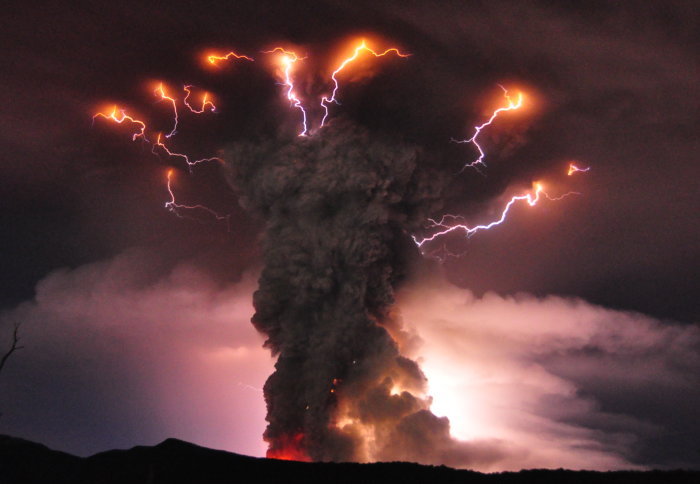Napoleon’s defeat at Waterloo caused in part by Indonesian volcanic eruption

Credit: Daniel Basualto
Electrically charged volcanic ash short-circuited Earth’s atmosphere in 1815, causing global poor weather and Napoleon’s defeat, says new research.
Historians know that rainy and muddy conditions helped the Allied army defeat the French Emperor Napoleon Bonaparte at the Battle of Waterloo. The June 1815 event changed the course of European history.
Two months prior, a volcano named Mount Tambora erupted on the Indonesian island of Sumbawa, killing 100,000 people and plunging the Earth into a ‘year without a summer’ in 1816.
Victor Hugo in the novel Les Miserables said of the Battle of Waterloo: ‘an unseasonably clouded sky sufficed to bring about the collapse of a World.’ Now we are a step closer to understanding Tambora’s part in the Battle from half a world away. Dr Matt Genge
Now, Dr Matthew Genge from Imperial College London has discovered that electrified volcanic ash from eruptions can ‘short-circuit’ the electrical current of the ionosphere – the upper level of the atmosphere that is responsible for cloud formation.
The findings, published today in Geology, could confirm the suggested link between the eruption and Napoleon’s defeat.
Dr Genge, from Imperial’s Department of Earth Science & Engineering, suggests that the Tambora eruption short-circuited the ionosphere, ultimately leading to a pulse of cloud formation. This brought heavy rain across Europe that contributed to Napoleon Bonaparte’s defeat.
The paper shows that eruptions can hurl ash much higher than previously thought into the atmosphere – up to 100 kilometres above ground.
Dr Genge said: “Previously, geologists thought that volcanic ash gets trapped in the lower atmosphere, because volcanic plumes rise buoyantly. My research, however, shows that ash can be shot into the upper atmosphere by electrical forces.”
Levitating volcanic ash
A series of experiments showed that that electrostatic forces could lift ash far higher than by buoyancy alone. Dr Genge created a model to calculate how far charged volcanic ash could levitate, and found that particles smaller than 0.2 millionths of a metre in diameter could reach the ionosphere during large eruptions.
He said: “Volcanic plumes and ash both can have negative electrical charges and thus the plume repels the ash, propelling it high in the atmosphere. The effect works very much like the way two magnets are pushed away from each other if their poles match.”

The experimental results are consistent with historical records from other eruptions.
Weather records are sparse for 1815, so to test his theory, Dr Genge examined weather records following the 1883 eruption of another Indonesian volcano, Krakatau.
The data showed lower average temperatures and reduced rainfall almost immediately after the eruption began, and global rainfall was lower during the eruption than either period before or after.
Ionosphere disturbances and rare clouds
He also found reports of ionosphere disturbance after the 1991 eruption of Mount Pinatubo, Philippines, which could have been caused by charged ash in the ionosphere from the volcano plume.
In addition, a special cloud type appeared more frequently than usual following the Krakatau eruption. Noctilucent clouds are rare and luminous, and form in the ionosphere. Dr Genge suggests these clouds therefore provide evidence for the electrostatic levitation of ash from large volcanic eruptions.
Dr Genge said: “Victor Hugo in the novel Les Misérables said of the Battle of Waterloo: ‘an unseasonably clouded sky sufficed to bring about the collapse of a World.’ Now we are a step closer to understanding Tambora’s part in the Battle from half a world away.”
-
This study was funded by the Science and Technology Facilities Council.
“Electrostatic levitation of volcanic ash into the ionosphere and its abrupt effect on climate” by Matthew J. Genge, is published in Geology.
Article supporters
Article text (excluding photos or graphics) © Imperial College London.
Photos and graphics subject to third party copyright used with permission or © Imperial College London.
Reporter
Caroline Brogan
Communications Division